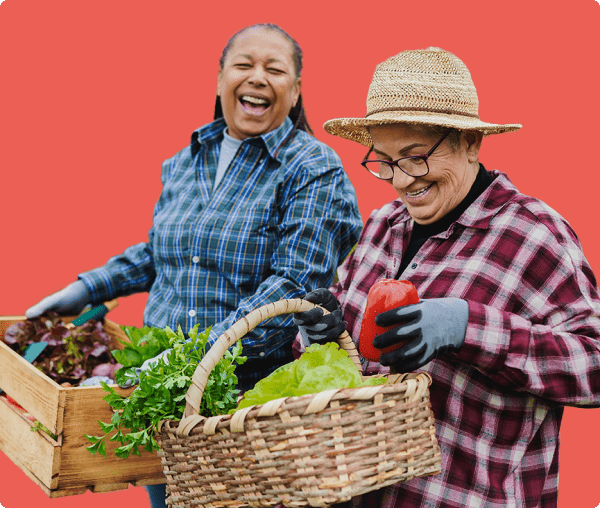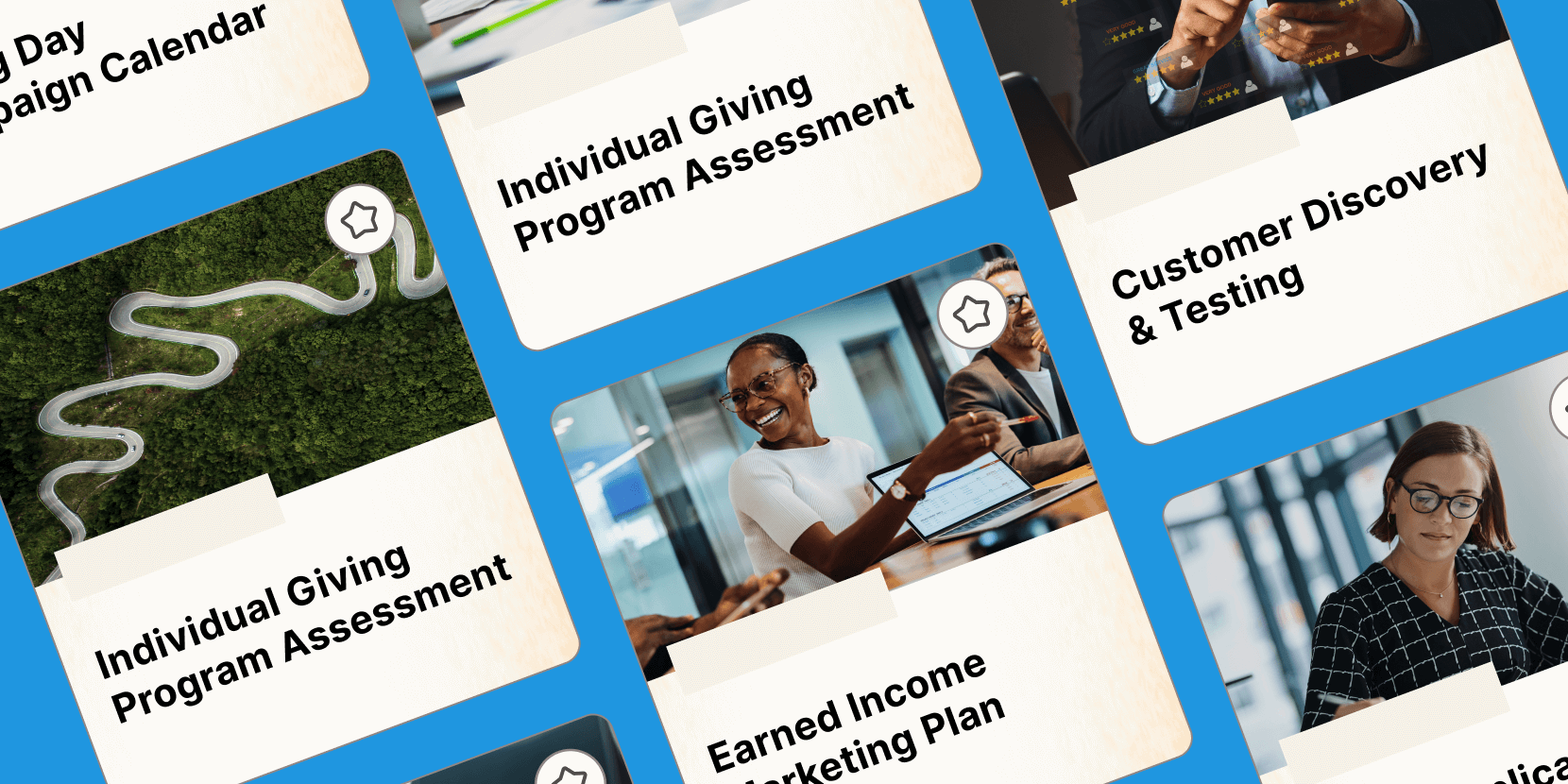Rural resilience: building capacity in rural nonprofits
 Gohar Chichian
·
7 minute read
Gohar Chichian
·
7 minute read

Rural-based nonprofits and communities have long experienced challenges in visibility, funding, and resources compared to urban locations. The US Census has identified that 60% of the US population lives rurally, yet the philanthropic support often shows up in fractured sporadic initiatives.
The vital role of capacity building resources
Rural nonprofits play a crucial role in addressing community needs. However, these organizations often operate with limited resources and face unique challenges that can hinder their ability to thrive. This is where the importance of capacity building comes into play. For grantmakers, investing in capacity support for rural nonprofits is not just a matter of funding; it's a commitment to strengthening the backbone of these communities.
Capacity building: a necessity, not a luxury
Capacity building for nonprofits refers to the process of developing and strengthening the skills, abilities, processes, and resources that organizations need to survive, adapt, and thrive in a fast-changing world. In the context of rural nonprofits, this means providing the tools and support necessary for effective leadership, sound financial management, strategic planning, and efficient program delivery. Capacity building grants for nonprofits are a vital resource, enabling these organizations to expand their impact and reach.
The importance of building capacity in rural areas

Rural nonprofits often serve as lifelines for their communities, addressing issues such as poverty, healthcare access, and education. However, these organizations frequently lack the infrastructure and support available to their urban counterparts. Building capacity in rural nonprofits is essential for several reasons:
- Sustainability and resilience: By investing in nonprofit capacity building, grantmakers help ensure that these organizations can sustain their operations long-term. This includes developing robust financial management systems, enhancing fundraising strategies, and improving governance structures.
- Effective program delivery: Organizational capacity building enables nonprofits to deliver programs more effectively. For instance, training staff and volunteers, upgrading technology, and refining program evaluation methods are all capacity building examples that can enhance service delivery.
- Community empowerment: Community capacity building goes hand in hand with nonprofit support. By strengthening local organizations including municipalities, funders also empower the communities they serve. This empowerment fosters community advocacy and leadership to drive more effective and sustainable outcomes for the regions and residents.
The rural funding landscape is often characterized by limited access to resources and opportunities. Capacity building grants can bridge this gap by providing much-needed support for infrastructure, training, and strategic planning. These grants are not just about funding; they are about building a foundation for success. By prioritizing capacity building for nonprofits, grantmakers can help rural organizations become more resilient, adaptable, and capable of meeting their communities' needs. It is essential to recognize the power of capacity building and continue to support the growth and development of rural nonprofits.
Growing together: strategies for empowering rural nonprofits

Catchafire hosted a discussion with Andrea Dobson, Chief Operating and Financial Officer of the Winthrop Rockefeller Foundation to share insights on how grantmakers can strategize for equity and inclusion in support of rural communities.
During the discussion, Andrea shared her long experience in the farm credit system coupled with her philanthropic know-how to address the structural barriers in rural areas. By intentionally resourcing civic engagement, self-advocacy, and empowerment at the community level, the foundation has seen the impact of building rural resilience. Andrea was joined by Guenevere Crum, Director of Community Engagement at Catchafire.
You can watch the discussion here.
Guenevere: Why are rural communities part of the strategic plan for Winthrop Rockefeller Foundation–how did that get elevated as a guide star for you all?
Andrea: Our mission is to relentlessly pursue educational, economic, social, ethnic, and racial equity for all Arkansans. We do this by first changing the conversation, and changing who’s in the conversation second. Our theory of change says by addressing those conversations, we’re going to change behaviors. When those behaviors change, we’ll get to changing the structural barriers that are in place now and are preventing all Arkansans from the prosperity that they deserve.
We are investing in Arkansas, where everyone can earn a livable wage, receive a quality education, and build generational wealth. Arkansas is predominantly rural, with a population of just over 3 million. We’re the smallest state west of the Mississippi. Sixteen percent of Arkansas residents fall below the federal poverty line, and Asset Limited, Income Constrained, Employed (ALICE) families make up another 31%. Almost 50% of the families in Arkansas cannot make ends meet even though they are working. ALICE represents the number of families who are unable to afford the basics of housing, childcare, food, transportation, healthcare, and technology. In the persistent poverty counties, 60% of the residents are BIPOC (Black, Indigenous, and People of Color).
What are some of the structured barriers to success within rural counties? What kind of role can philanthropy play in addressing that? How can we make a difference?
The basics that many of us take for granted may not be present in a lot of rural communities:
- A functioning water and sewer system. If you live in a community where the water and sewer systems are failing regularly, how do you function?
- Adequate, affordable housing in communities where we don’t have good jobs or income streams, and so the value of the housing stock goes down. Housing prices are constricted…so new housing can’t be created.
- Connectivity–not just broadband, but cell phones and cell service.
Most of our rural communities are in places where they’ve inherited extractive types of agriculture and industries, and finding ways to make those sustainable is an issue. Free markets have really failed a lot of them.
The Community Reinvestment Act is something that is designed to help banks serve populations that have been underserved. Seventy five percent of counties in America lost bank branches in the last 10 years. Forty percent of all counties in America that are rural have lost a bank branch, so the reality of getting capital from our financial institutions is horrible. Rural communities don’t have access to capital.
We often look for intermediaries to get money into communities, and a lot of rural communities don’t have existing intermediaries.
“Philanthropy’s done very little to understand rural. It invests roughly $50 per person in rural communities; to put that number in context, the dollar amount per person is $2,000 for New York and $4,000 for San Francisco. You can see there’s an exponential funding gap.”
Andrea Dobson
Chief Operating and Financial Officer, Winthrop Rockefeller Foundation
So what can philanthropy do?
First, we can be the intermediary that grants funds to nonprofit partners and communities in rural areas so they can spend the money and pull down the federal grant money. We have done that with COVID funds, where we stood in between the Arkansas Department of Health Equity and the South Arkansas community that really needs a health resource center. This helped get COVID funds from the federal funding stream down to them because there was no way they could actually spend the money and then be reimbursed. So we fronted the money and are being reimbursed as they spend the money.
We’ve done the same thing with large national foundations who can be partners. The Robert Wood Johnson Foundation has twice given us rather large grants with the full intent that we would re-grant those to communities at smaller dollar amounts than they can do. So, they’re giving us a million dollars and we’re turning around and breaking that down into the size of grants that we can make in our rural communities.

“This is where Catchafire really helps–they can provide grant writers, fundraisers, back office expertise, marketing and communications, storytellers, all of those things can help our nonprofit partners tell their stories and lift up the information that's necessary to attract resources to them. One of the things we’ve done is fund Catchafire and provide those resources to our grantee partners without them having to pay.”
Andrea Dobson
Chief Operating and Financial Officer, Winthrop Rockefeller Foundation
What I really saw is that you don’t have to have that expertise in your own backyard because you can connect with people no matter where they’re at and pull someone to talk to you about tech systems or presenting your financials differently to the board. These are all ways that Catchafire can really make a difference.
I wanted to talk about the process of implementing across the organization. How have you refreshed the approach to self-advocacy and empowerment for communities to really carry their voice further?
We’ve learned that building trust is really important. We probably had to learn the hard way that the people who live in a community have the best grasp of the problems in their communities and the solutions that fit their situations.
We often entered communities with good intention, but with a solution already cooked up. This had unanticipated consequences and didn’t work out the way we thought. A number of things came together around 2007. We had a change in leadership at the top, and the global financial crisis began. We went from an asset balance that was north of $150 million down to something in the eighties. We recalibrated how to contribute and started listening much more intentionally in our communities.
The Winthrop Rockefeller Foundation has:
- Invested in community development financial institutions (CDFIs) across the state, encouraging collaboration.
- Pivoted from being a project funder to a general operating support funder.
- Implemented trust-based practices.
- Invested in leadership development at the grassroots level.
- Collaborated as a partner in accessing federal grant funds for communities, which has always been a larger funding pool than philanthropy has available.
I want to talk more about the Catchafire and Winthrop Rockefeller Foundation partnership to bring skills-based volunteering to the state. What has that meant for the organizations that have been able to access volunteers and specialize in that area of expertise that they may not have in their community? What does this look like for the organizations participating in the program in Arkansas?
I heard from Candace at the Rural Community Alliance, which is working on a lot of equity issues in Arkansas. Everytime she has a question, she can go to consultants on Catchafire and get quick answers within 24 hours.
The projects that nonprofits have worked on is north of 20, and may be north of 50 at this point. There have been lots of volunteer hours contributed and we’ve really seen some positive outcomes. The feedback has been way above 90% in terms of enjoying their use of the platform. Catchafire is a wonderful resource for our nonprofit partners that both have connectivity and also have been working with us long enough to feel comfortable reaching out to a volunteer that they didn’t know. There’s a lot of trust that needs to be built in communities.
I want to move on to falsehoods about rural communities that philanthropy might be holding on to that can be getting in the way of grantmaking and strengthening communities. What are the things philanthropy needs to let go of?
Rural America is far more diverse than the media portrays it. There are far more faces of color than the media is showing. We have indigenous members, we have a lot of immigrant faces, and we have people who were on the land long before we got here. Really trying to address that is important.
There is a legacy of extractive industries, particularly to extractive agriculture in rural communities. Whether you believe in DEI or not, the reality of the legacy of slavery is - certainly in our part of the world - real and we need to be thoughtful about how we engage with that.
How do you build relationships across the rural landscape, when there’s a limited number of people or organizations that are there?
We spend a lot of time funding individual consultants. Many of them are grounded here in Arkansas, to go down and provide the guidance, wisdom, and expertise to these small community organizations and small city governments. That kind of collaboration is really important. Find the organizations that are there that can use your help. Foundations can offer guarantees which take no cash to help small entrepreneurial businesses get the funding that they need in order to have cash flow. For us, it often isn’t funding another organization- It’s finding another partner who can really help and move around amongst what’s there, or helping to build up an existing structure that’s there.
For more grantmaking insights, watch the full discussion here.



